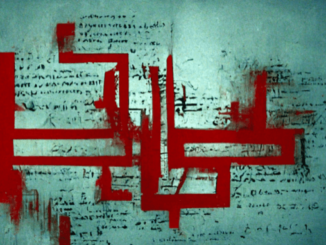
Wargaming, red teaming……. these terms can often seem misleading. Much of it stems from the fact that the military heritage behind them gives them a credence all of their own. Having served in the Royal Marines for over 18 years, I am often faced with a familiar statement from commercial organisations; “but its no surprise the military conduct such rigorous tests….. because the consequences are life and death – our strategy is a lot less important than that”.
Its true that the military invests considerable intellectual and doctrinal effort into red teaming. They have useful brochures on it which describe best practice, principles and list ‘golden rules’. These guides are well worth a read – especially as they are progressively shifting the emphasis away from ‘me vs my competitor’ and onto a broader range of inputs. However, my own experience is that the theoretical study is separate from the day to day reality. I have seen several military operations, which I was part of, go awry because the gaming element prior to launch was just a box ticking exercise, or was seen as unimportant. The outcomes were indeed catastrophic.
Influenced by these events, I left the Armed Forces nine years ago, on a personal mission to understand gaming concepts and improve the way it is conducted. I set up a company which specialised in gaming and, along the way, I have done a lot of reading, but also supported many clients including Shell, Mercedes, Waitrose, as well as smaller businesses across the world. Each of these games has been an opportunity to gain experience in the way people react and how to deliver different types of game, from Pre-Mortems to Thinking Hats to Red vs Blue Teams. As I have taught clients, I have also learned from them and come to the conclusion that success in gaming is based on some simple principles:
Diversity of thought
Gaming is all about creativity – which requires diverse thinking. This can be accelerated by the inclusion of people from outside the immediate core business/department area, provided they have knowledge of the topic / subject matter. Thinking carefully about who to invite to a game, to get the maximum amount of different perspectives, is invaluable. This video on the principle of cognitive diversity by Matthew Syed is well worth a watch.

In the diagram above[1], all of the team members in team 1 are too similar. They likely all come from the same management level, have the same type of experiences, the same level of knowledge and frame of reference. This means that, even though each individual may be extremely knowledgeable, as a collective they only occupy a very small proportion of the problem space and will therefore come up with limited solutions.
The team members in team 2 are too diverse. This means that although they have lots of creative ideas and are highly innovative, very few of the solutions actually contribute to the problem space they have been asked to address.
Like Goldilocks, the team members in team 3 are just right. They are sufficiently diverse in their thinking and experiences that they can occupy all of the problem space and come up with a wide range of creative solutions, but they are not sitting outside the problem space and therefore so unfamiliar with the issue that they can’t contribute.
Safe Space
If the first principle of running a successful game is diversity of thought (and therefore a wide range of people), the second principle follows by default – making sure that everyone taking part feels comfortable to contribute.
Ensuring that they enter the room in a mindset of it being a safe space to express their views is really important. Otherwise you have diverse representation but not contribution. To create a safe space means working hard, in advance, to help everyone understand what is needed, giving them the confidence they will require. It applies equally to senior and junior people. Senior people need to be reassured that the challenges being expressed are focused on the TOPIC not them as an individual. Junior people need to feel comfortable that if they express a valid opinion they will not be sanctioned later.
Transitory
For some traditional and hierarchical organisations, it helps to understand from the outset that a game is just a moment in time. That we need to temporarily flatten the structure in order to generate new ideas and fresh perspectives. This helps reassure some leaders that they aren’t opening Pandora’s box and everyone will be challenging every decision from now on.
All organisations need to get things done. For that, people need to be assigned tasks. The game is just a way of identifying what those tasks and actions are, through temporarily getting away from the day to day structure.

Preparation
It will be clear by now, that a good deal of preparation needs to be conducted prior to a game. People need to walk into the room comfortable with the behaviours that are required, an understanding of the topic they are testing and the role they are playing.
This preparation cannot be understated. It is often best done as a group briefing a week or so ahead of the main test, with calls to those who cannot make the briefing. This enables everyone to be given the same ‘rules of the road’ in terms of how the game will be run. Importantly for a facilitation perspective, it also gives the facilitator an opportunity to meet the players in advance and get a feel for who is more extrovert / introverted, who has key knowledge and build a relationship with them.
Timeliness
Organisations often feel they must have a fully formed plan that is robust before they test it. This has two problems. Firstly, those who created the plan are now emotionally tied to it and any criticism of it feels like an attack on themselves, rather than a critique of the plan. Secondly, it can mean that time is incredibly short to make any corrections or adjustments.
Games can be run at any stage of the planning process; at the outset as a way of generating ideas and potential options, at the mid-point as a way of selecting between options, or at the end as a ‘health check’ of the chosen solution to make sure it is fit for purpose.
The general rule of thumb is to always run a game far earlier in the process than seems to make sense or feels comfortable
Output and Outcome Focused
A game can quickly spiral off into being an enjoyable discussion down a rabbit hole. It is vital that the game is kept focused on the desired outcomes and outputs. These are usually; risks, opportunities and actions. They can also be; building a better understanding across a team, or helping to socialise a new concept.
Whatever the outcomes or outputs are, the facilitation team should ensure that the focus remains on those deliverables, and on time. The correct amount of time needs to be given to each aspect of the game, or it will go into significant depth on the first subject area and neglect the rest. The facilitators also need to remember to capture, accurately, the outputs. Nothing is worse than a fantastic game with a great depth of challenge and insights, only for no-one to subsequently remember what those were!
…and back again
In July 2017, I was approached by one of my former military commanders, who was now extremely high up in Defence. He asked me if I would be willing to help re-invigorate and refresh the way in which wargaming was done in the military. It was fascinating to be invited to do so and be part of some of the conversations. I don’t think that I ended up shifting the cursor very much if I’m honest, and my commercial experience was seen as a bit irrelevant by some in the military. What is heartening though, is that no matter what the organization, military or commercial or charitable, the art of gaming is being recognised for what it is; a powerful and capable tool that doesn’t just stress test plans, it brings cohesion across teams and builds understanding. Long may that continue!
References and further reading
[1] Syed, M. 2019, Rebel Ideas, John Murray, UK
- From Battlefield to Boardroom….. and back again! - 29th October 2020





Be the first to comment